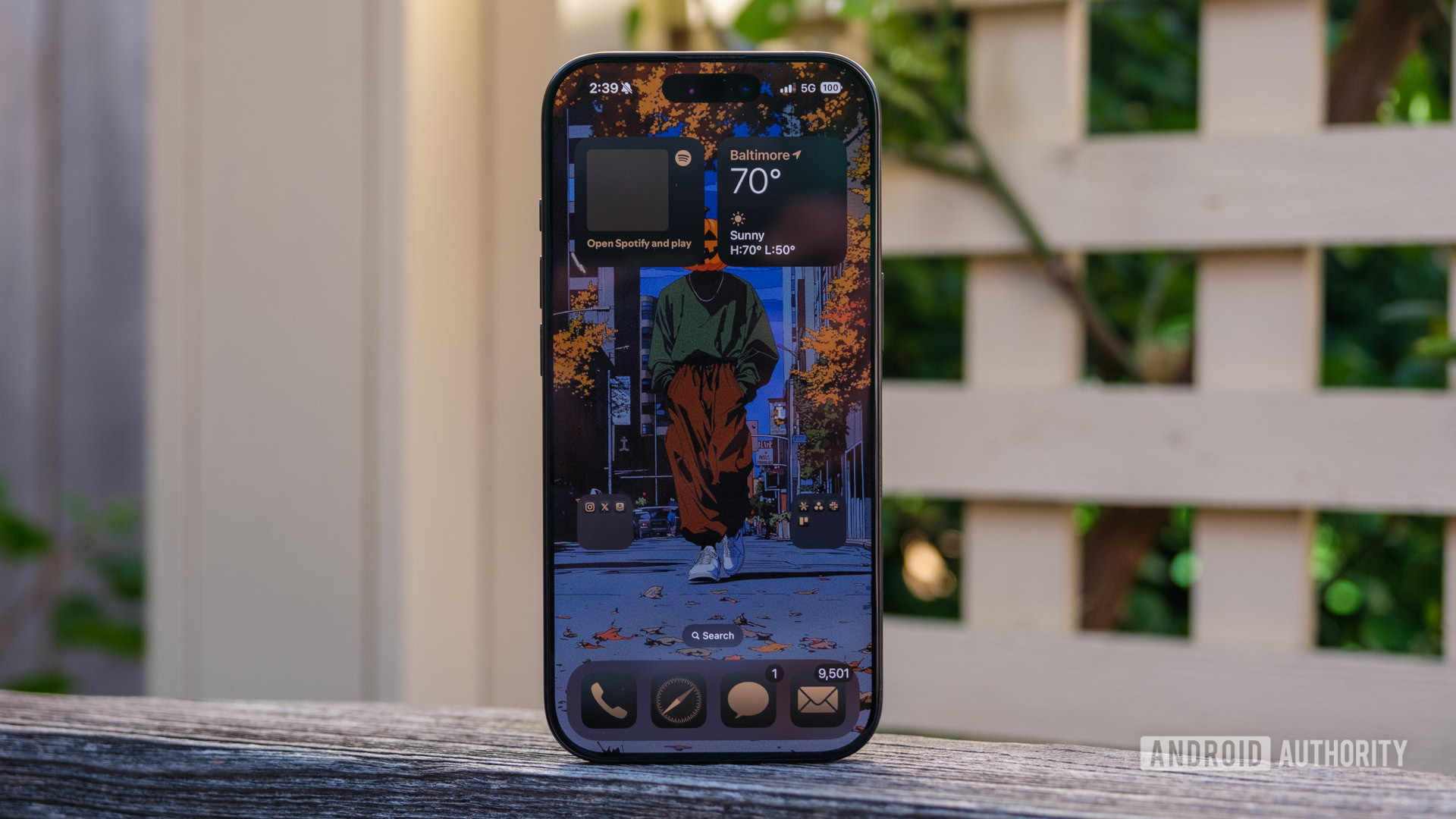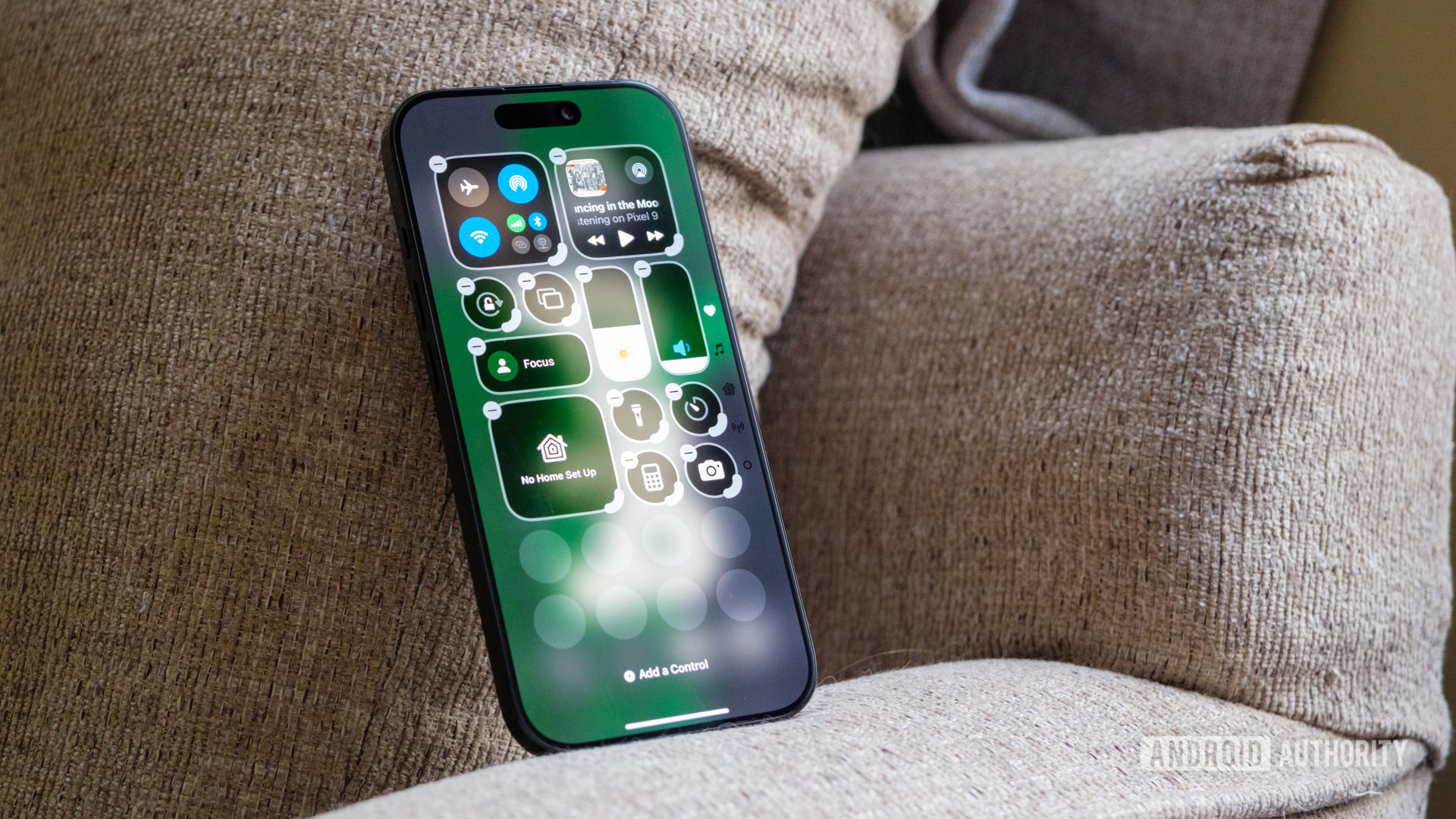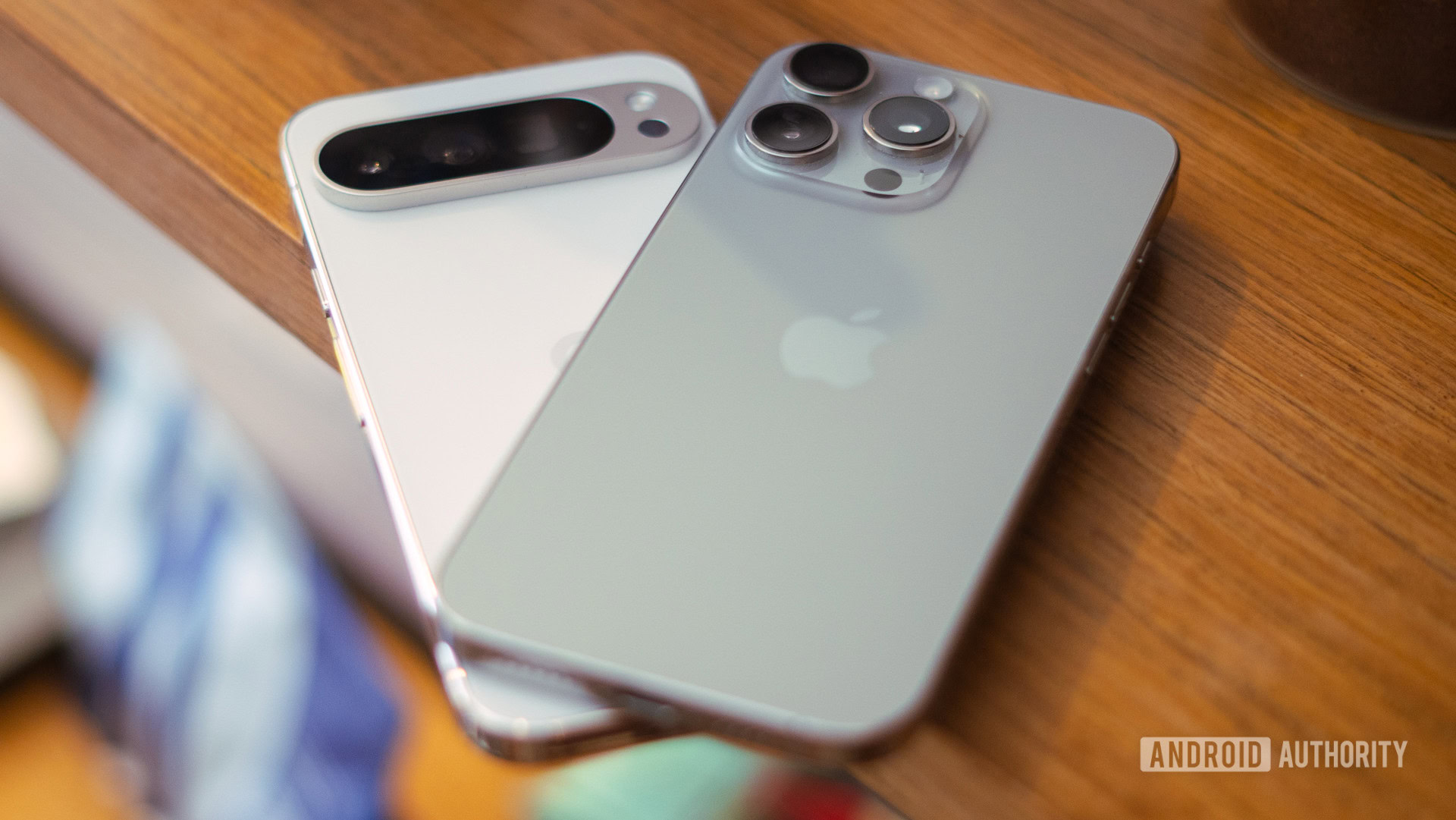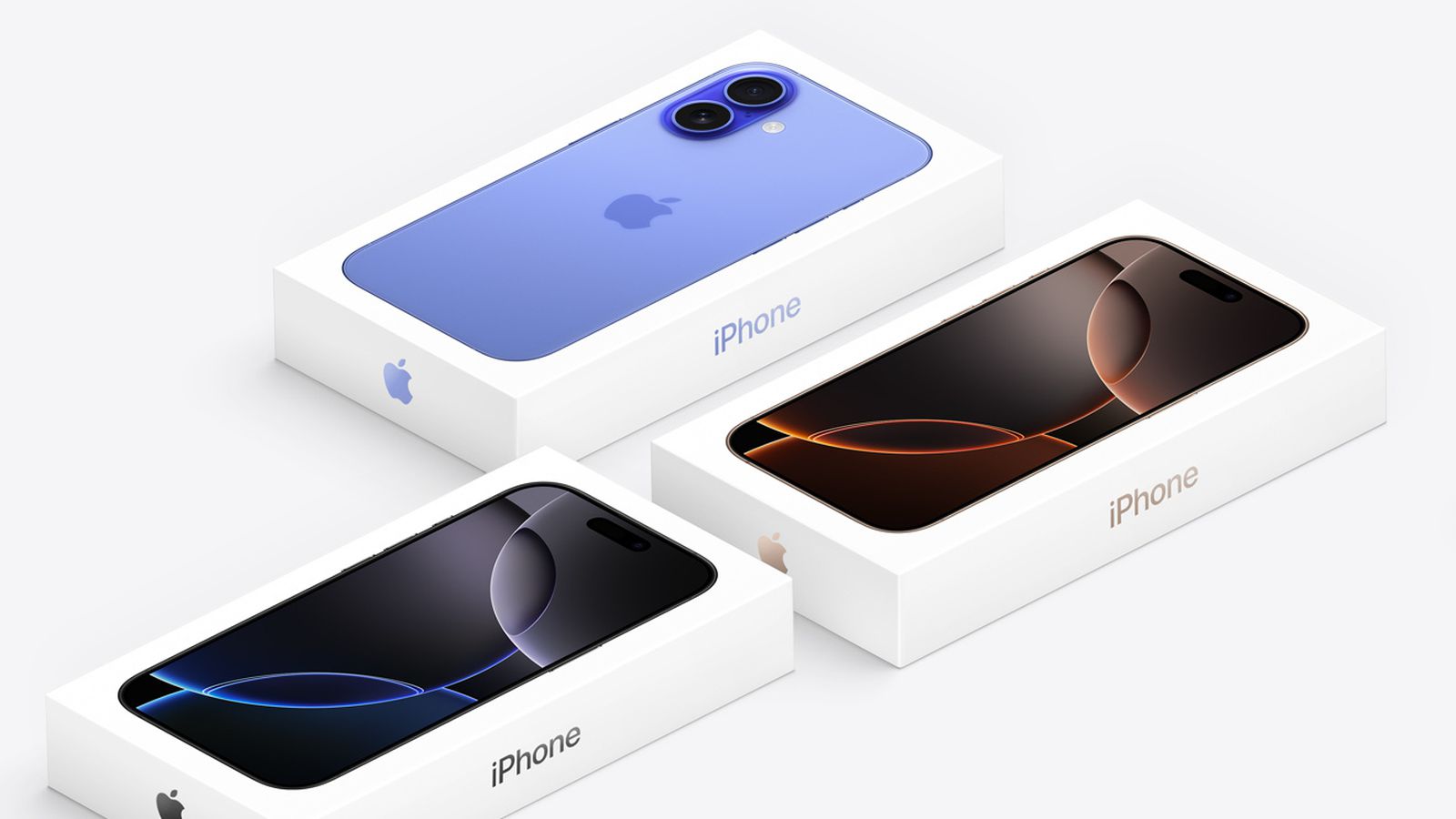Ryan Haines / Android Authority
If we’ve compared Android to iOS once, we’ve compared them a hundred times. At this point, we may have actually compared them a hundred times. It’s not always the same comparison — we’ve looked at everything from niche AI tools to revamped customization features — and the same operating system doesn’t always come out on top. However, at this point, we’ve spent enough time bouncing back and forth to notice a few trends, and none has been more surprising than the slow, steady Android-ification of iOS. I’d go so far as to say that iOS is starting to feel like one of my favorite Android skins, and here’s why.
Do you think iOS has become too much like Android?
0 votes
A little more customization goes a long way

Ryan Haines / Android Authority
I’m old enough to remember when every iPhone felt almost exactly the same — it’s only been a year or two, after all. Jokes aside, you only have to go back as far as iOS 16 or 17 to lose many of the Android-level customization features that we’ve come to know and love, and if you go back as far as iOS 14, you lose access to widgets on your iPhone altogether. That’s a surprisingly short timeline of just four years since Apple’s software was about as locked down as can be.
And don’t get me wrong — as an Android fan, I’m glad that Apple has made a lot of progress in the last couple of years. It’s exactly the type of competition my preferred operating system needs to keep moving forward. I mean, the fact that Apple has caught up to a few things I’ve been doing since I had an HTC Droid Incredible 4G in my pocket a decade ago should have Google quaking in its boots. Okay, this time, I really am done busting on Apple for its slow, steady approach.
Now that I can put apps and widgets anywhere I want them, it’s easy to make iOS 18 feel much more like home.
After all, the relatively new customization options turned out to be one of the easiest ways for me to convince my friends to update their phones for once. I couldn’t win them over with RCS or Apple Intelligence (since that would have required a new phone), but the idea that they could suddenly arrange apps around their pets’ faces was all it took. In fairness, it’s worked on me, too — I don’t dread my annual dip into iOS nearly as much now that I can stick to the two-folder, two-widget home screen that I love so much. Besides, as so many Android devices and skins start to look more and more alike, it’s good to see someone using the old “Be together, not the same” tagline.
Of course, there are still plenty of customization features that Android does far, far better than iOS, but it’s nice to see Apple upping its game. I still much prefer the color-matched app icon experience on Android, which picks out a color palette based on your wallpaper rather than simply making every piece of the interface one color and giving your icons darkened backgrounds. Maybe it’s better than Apple’s previous free-for-all approach, but it’s still less cohesive than Android. On the bright side, Apple has already changed how its themes work at least a little bit, as choosing a color no longer tints my Spotify widget and makes it harder to read.
I’ll also give Android the edge when it comes to widgets, if only because it offers much better shapes and more third-party apps to pick from. I still love that Google opened up the Photos widget to freeform shapes in Android 12, and Nothing’s mix of circular, pill-shaped, and square widgets makes what would otherwise look like a grid system much more fun. The day Apple ventures outside its square (or maybe rectangular) widgets is when I start thinking it’s caught up to Android.
And yet, I have to give Apple a little credit for its lock screen widgets. Although Android technically had them first, they were a short-lived feature from Android 4 to Android 5 before disappearing — though they might come back officially as part of Android 16. Apple, on the other hand, introduced them when it overhauled its entire lock screen customization system in iOS 16. In true Apple fashion, though, they’re limited to small, not always legible squares and rectangles, and you have to set them each time you change your lock screen.
Anything you can do, I can do… later

Ryan Haines / Android Authority
While customization is probably the most obvious example of iOS trending towards Android, it’s far from the only thing Apple has pinched from outside its walled garden. As the open-source operating system with far more developers working on brilliant skins like One UI, Hello UX, and Oxygen OS, it’s easier for a feature to hit Android first and get scooped up by iOS later. It often comes down to when Apple will adopt a feature, not if.
Look no further than the always-on display to see just how far behind the eight-ball Apple can be. Depending on who you ask, it’s been around on Android since the days of the Moto X nearly a decade ago or on Nokia phones even further back. Apple? Yeah, it didn’t come around to an always-on display until the iPhone 14 Pro launched in 2022, and even now, it remains a Pro-only feature. Some — including me — might even say that Apple’s AOD is a little bit too always-on, given that I don’t always need to see my wallpaper when I’m just glancing down for a notification.
Even something as ubiquitously Android as the App Drawer finally made its way to iOS after several years of waiting. If I had to guess, I’d say that you don’t remember ever using an Android phone without a swipe-up drawer for its apps, simply because it’s been a key part of the operating system ever since Android 1.0, and it’s tough to go further back than that. iOS, on the other hand, only added its App Library — which organizes your apps by category rather than alphabetically — with iOS 14 in 2020.
Apple isn’t always quick on the draw, but it’s picked up everything from the Always On Display to battery saver mode from its closest rival.
In hindsight, I might even say that iOS 14 was the beginning of Apple’s Android-ification, as it marked the addition of several other features previously reserved for our favorite open-source platform. It was the same year that Apple added the ability to set certain default apps — though not every app — matching a capability from Android 2.3. iOS 14 also marked the start of picture-in-picture support, which remains as close to a true split-screen mode as we’ve seen from Apple.
And then, there’s battery saver mode — a thing that every smartphone user ever has needed at one time or another. Battery life has come a long way over the last few years in terms of efficiency, but for a long time, Apple simply relied on its top-tier optimization to stay ahead of the battery life curve. Then, in 2015, it added Low Power Mode as a key feature of iOS 9, just a few years after Android brought it system-wide with Power Saver in 2011.
If imitation is flattery, then Android wins this round

Dhruv Bhutani / Android Authority
To me, there are two ways to look at iOS becoming more like Android — you can be scared that it will draw users away from Android and into the safety of Apple’s walled garden, or you can see it as Apple admitting that it’s not always right. As a Pixel fan, I’m going to lean into the second option. After all, I praised Google when it chased after Apple regarding hardware quality and reliability, so why not praise Apple for relaxing its previously strict control over its operating system?
Besides, it’s not like Apple is truly becoming Android. It’s still by far the more locked-down, tighter-controlled operating system, with stricter requirements for submitting an app to the app store, limits to what you can do in terms of side-loading apps, and optimizations of every last aspect of its software to squeeze every last minute of battery life out of otherwise tiny cells. I don’t have a significant issue with any of those things because Apple’s ability to push years and years of software updates to its iPhones more than makes up for the limitations.
The more iOS feels like Android, the more I want Android to raise its game — which is exactly what it needed.
And maybe, just maybe, this is the type of pressure Android needed from iOS all along. Even though software features like FaceTime and iMessage remain reliable ways to pressure people to switch to iOS — at least in the US — Android’s customization options had long been enough to give people second thoughts. They were good enough and flexible enough for people to ignore that their friends saw them as green bubbles simply because spending hours modifying their home screens or finding just the right widget for any situation was more enjoyable.
With iOS sporting many of the same wrinkles, it’s time for Android to find another way to differentiate. Maybe that means leaning on its AI features, whether from Gemini, Galaxy AI, or somewhere else entirely. Or perhaps it means leaning even further into foldable form factors, especially now that the HUAWEI Mate XT is more than just a concept and Samsung’s own triple-foldable is tipped for a summer launch.
But if Android uses AI as its differentiator going forward, I hope it does so carefully — sometimes Apple’s slow, steady approach does pay off.









